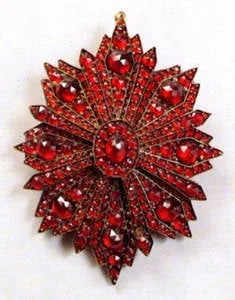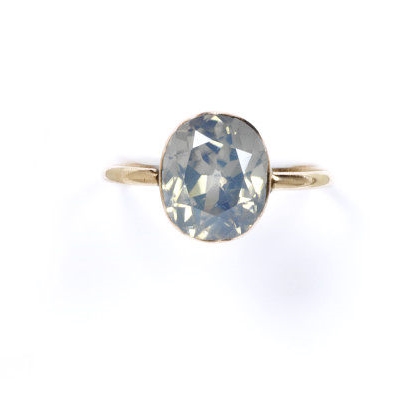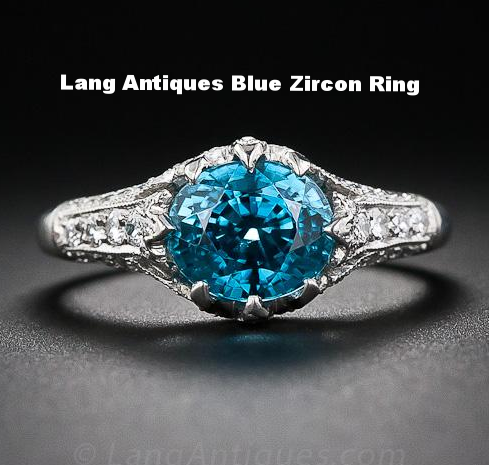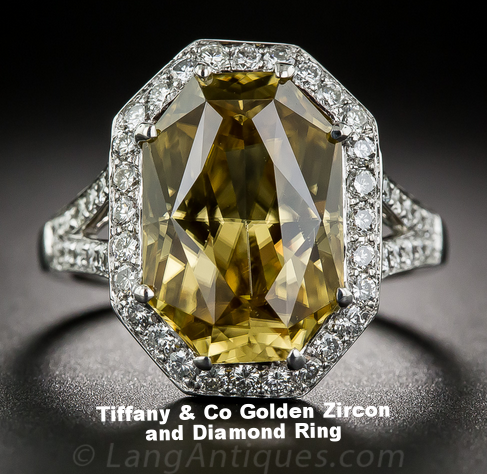The Colorful World of Topaz
/I have always thought it was a shame that the general public has been forced into the misconception that topaz is merely and inexpensive blue gem. Incidentally the blue color is hardly ever natural: It’s almost always caused by treatment. Topaz has a far broader and more colorful story to tell gemstone lovers.
Topaz is allochromatic. This means that the color you see is caused by an elemental impurity or defect in its crystal structure rather than by an element of its basic chemical composition. For example, the presence of the element chromium causes natural pink, red, and violet-to-purple colors in topaz. Imperfections at the atomic level in topaz crystal structure can cause yellow, brown, and blue color. Brown is a common topaz color, and the gem is sometimes mistakenly called “smoky quart
THE 97.45-CARAT BLAZE IMPERIAL TOPAZ IS IN THE COLLECTION OF THE FIELD MUSEUM OF NATURAL HISTORY. - (PHOTO: "GEMS AND GEMSTONES: TIMELESS NATURAL BEAUTY OF THE MINERAL WORLD" BY GRANDE & AUGUSTYN, U OF CHICAGO PRESS.)
Topaz actually has an exceptionally wide color range that, besides brown, includes various tones and saturations of blue, green, yellow, orange, red, pink, and purple. Colorless topaz is plentiful, and (as was mentioned earlier) is often treated to give it a blue color.
The color varieties are often identified simply by hue name—blue topaz, pink topaz, and so forth—but there are also a couple of special trade names. Imperial topaz is a medium reddish orange to orange-red. This is one of the gem’s most expensive colors. Sherry topaz—named after the sherry wine—is a yellowish brown or brownish yellow to orange. You may hear stones in this color range are referred to as "precious topaz". This term is used to distinguish them from less expensive citrine (yellow quartz) and smoky quartz.
TOPAZ CRYSTALS ARE TYPICALLY ELONGATED, WITH GROOVES PARALLEL TO THEIR LENGTHS. FOR THIS REASON, THEY'RE COMMONLY CUT INTO LONG OVAL OR PEAR SHAPES. THESE CRYSTALS SHOW ORANGE, PINK, AND BROWN COLORS. - ERIC WELCH/GIA
What is Imperial Topaz?
Red is one of the most prized and rare topaz colors. Red represents less than one-half of 1 percent of facet-grade material found. The color known in the gem the trade as "imperial topaz" is even more highly prized and rare. They color is a bit elusive and subjective; however, many dealers insist that a stone must show a reddish pleochroic color to be called imperial topaz. The reddish pleochroic color often appears at the ends of fashioned gems—like pears and ovals—that have an otherwise yellow-to-orange bodycolor. This look is illustrated in the images below.
The name for "imperial topaz" originated in nineteenth-century Russia. At the time, the Ural Mountains were topaz’s leading source, and the pink gemstone mined there was named to honor the Russian czar. Ownership of the gem was restricted to the royal family.
THIS UNTREATED 45-CARAT IMPERIAL TOPAZ DISPLAYS AN ATTRACTIVE REDDISH PEACH COLOR. (PHOTO: CONSTANTIN WILD, IDAR-OBERSTEIN)
SPECTACULAR PRIZE-WINNING, ORANGY-RED, FLAME-SHAPED IMPERIAL TOPAZ GEM. (PHOTO: GEM COURTESY OF JOHN DYER & CO.)
























